A South Pacific Cruise, especially around Tahiti et ses îles with SILVERSEA, and its expedition cruise vessel SILVER DISCOVERER, is immidiately recalling a journey into paradise, New Cythera (Île de la Nouvelle Cythère), as Admiral Louis-Antoine, Comte de Bougainville titled Tahiti et ses îles, during his circumnavigation on board the frigate LA BOUDEUSE 1766 till 1769. Or recalling the BOUNTY and illfated Captain Bligh and the mutiny conducted by Christian Fletcher.
It is all about mana ...
by Earl of Cruise
It is all about mana ...
by Earl of Cruise
SILVERSEA´s SILVER DISCOVERER on the traces of Admiral Louis-Antoine, Comte de Bougainville - courtesy SIVERSEA
SILVER DISCOVERER, bought 2013 and introduced 2014 as the third expedition vessel of SILVERSEA (103.62m,
15.54m, 4.57m, originally 128 pax), ex Clipper Odyssey 1999, ex OCEANIC ODYSSEY, ex OCEANIC GRACE 1989. She was built for the Japanese luxury cruise market. Her competitor was back then FRONTIER SPIRIT, new BREMEN of HAPAG-LLOYD CRUISES
Learn about the four expedition ships in the Silversea fleet with Conrad
Combrink, Head of Expedition Planning & Strategic Development
South Pacific Cruise Ships from Silversea
SILVERSEA´s loyal following of adventure travellers can now explore the remote archipelagos of the vast Pacific aboard the sleek, 120-guest cruise ship SILVER DISCOVERER. The small SILVER DISCOVERER is the perfect platform for viewing these untamed landscapes, with all ocean-view suites and plenty of deck space so that a breaching whale or a pod of dolphins is always within sight. SILVER DISCOVERER´s shallow draft allows her to navigate closer to shore, and with a fleet of 12 Zodiacs, guests can land on isolated shores and explore wetlands and submerged ecosystems, up-close and in-depth.
Archipels to discover on a south pacific cruise
Each archipelago has the common cultural set of Polynesia, but in variations.The cruises I am discribing will be bookable now for the first of three departures in October 2019 by SILVERSEA so please choose Otcober, or another date of choice, if you like to join.
James Cook, English navigator witnessing a human sacrifice in Taihiti, Otaheite c. 1773 - Source unknown
Human sacrifices and ritual cannibalism was shocking the European endeavourers and later missionaries and started whipping out the cultural remains and with that the culture of Polynesians itself. In the early ages of humanity the human sacrifice was the most sacred and occured when the goods had to be tamed ...
Human sacrifices and ritual cannibalism was shocking the European endeavourers and later missionaries and started whipping out the cultural remains and with that the culture of Polynesians itself. In the early ages of humanity the human sacrifice was the most sacred and occured when the goods had to be tamed ...
In 1771, Bougainville published his travel log from the expedition under the title `Le voyage autour du monde, par la frégate LA BOUDEUSE, et la flûte L'ÉTOILE´ (`A Voyage Around the World´). The book describes the geography, biology and anthropology of Argentina (then a Spanish colony), Patagonia, Tahiti and Indonesia (then a Dutch colony). The book was a sensation, especially the description of Tahitian society. Bougainville described it as an earthly paradise where men and women lived in blissful innocence, far from the corruption of civilisation.
A Polynesian man dancing the traditional dance, in which the culture, history and traditions are told. A tradition prohibited by uninterested eveangical missionaires, as being to "bodily". It started a revival, not only to cheer tourists, but give back heritage and tradition - © TAHITI TOURISME
This book started our reception of the South Pacific, and the Society Islands in special, till today. This book became a Best Seller. Our image about became ingrained as THE paradise, especially with the following publishings by Jean-Jacques Rousseau and Denis Diderot´s books.
Paul Gauguin Bathers at Tahiti, Gaugin once traped by the dream, later disapointed, Gaugin too formed our picture of the South Seas Paradise - Collecting Gauguin, Samuel Courtauld
Bougainville's descriptions powerfully expressed the concept of the noble savage, influencing the utopian thoughts of philosophers such as Jean-Jacques Rousseau before the advent of the French Revolution. Denis Diderot´s book `Supplément au voyage de Bougainville´ retells the story of Bougainville's landing on Tahiti, narrated by an
anonymous reader to one of his friends. Diderot used his fictional
approach, including a description of the Tahitians as noble savages, to
criticise Western ways of living and thinking.
It was back then a paradise with dark sides, taboos bondaged the society in many aspects. The first European endeavourers but had been fascinated and shocked about their free spirited sexuality. Later in 19th century when evangical missionairies pressed the people into their scheme of mindset, arrogant, understanding about the culture and traditions nothing, they quashed the culture and beliefs in the "name of god" with their prude mindset till Polynesian people nearly lost their identity.
Only since the 1980s there is a revival of the old and traditional culture and recreating the identity out of the ruins remained - if you don´t know from where you are from, you don´t know you potential future.
Most of us have watched with interest `Mutiny on the Bounty´ or `Rapa Nui´, staging on Easter Island, and so many other films and most of us may have been carried away by their own dream of paradise in the South Seas ...
Feel the power of mana on Tahiti et ses îles!
Tahiti is so much more than a sunny and exotic destination composed of 118 islands and atolls found within five sprawling archipelagos in the wide Southern Pacific. Tahiti is a very special destination with a unique culture and famous people known for its friendly welcome for all visitors and more than our dream of paradise on earth. Tahiti´s islands and turquoise lagoons have a immense diversity and endless opportunities to discover a near legendary land full of specialexperiences.
Spearfishing Polynesian men, a traditional and sustainable art of fishing, important, when you living in an enviroment with scarce resources - © Gian Paolo Barbieri, Rymaond Graffe (editor), copy from my book `TAHITI TATOOS´, published by TASCHEN
Tatau and tapoo, are Polynesian words that found their way in our global languages - tatau = Tatoo, tapou = Tabu/Taboo
Tatau and tapoo, are Polynesian words that found their way in our global languages - tatau = Tatoo, tapou = Tabu/Taboo
It was back then a paradise with dark sides, taboos bondaged the society in many aspects. The first European endeavourers but had been fascinated and shocked about their free spirited sexuality. Later in 19th century when evangical missionairies pressed the people into their scheme of mindset, arrogant, understanding about the culture and traditions nothing, they quashed the culture and beliefs in the "name of god" with their prude mindset till Polynesian people nearly lost their identity.
Only since the 1980s there is a revival of the old and traditional culture and recreating the identity out of the ruins remained - if you don´t know from where you are from, you don´t know you potential future.
Mana is a life force and spirit that surrounds and connects all living
things, and no where is its presence more alive and loved than The
Islands of Tahiti - Source: YouTube, Tahiti Tourisme
Most of us have watched with interest `Mutiny on the Bounty´ or `Rapa Nui´, staging on Easter Island, and so many other films and most of us may have been carried away by their own dream of paradise in the South Seas ...
Feel the power of mana on Tahiti et ses îles!
Tahiti is so much more than a sunny and exotic destination composed of 118 islands and atolls found within five sprawling archipelagos in the wide Southern Pacific. Tahiti is a very special destination with a unique culture and famous people known for its friendly welcome for all visitors and more than our dream of paradise on earth. Tahiti´s islands and turquoise lagoons have a immense diversity and endless opportunities to discover a near legendary land full of specialexperiences.
During the the hight of the Financial Crisis in 2009, which started in 2007/8, SILVERSEA positioned for a first time its then PRINCE ALBERT II. named, now SILVER EXPLORER, for expedition cruises in French Polynesia.
Now SILVERSEA´s expedition cruiser SILVER DISCOVERER is cruising in October and November 2019 in Tahiti et ses îles for three sailings.
´Ia ora na e manava
Dates: Oct. 17th, 2019, Oct. 30th, 2019 and Nov. 12th, 2019
Ports/Islands:
Papeete, Tahiti - Bora
Bora, Society Islands - Mataiva - Rangiroa, Tuamotu Islands - Day At Sea - Day
At Sea - Omoa, Fatu Hiva - Hanavave, Fatu Hiva - Taioha'e, Nuku Hiva - Anahō
Bay, Nuku Hiva - Pau Mao Bay, Hiva Oa, Marquesas Islands - Atuona, Hiva Oa,
Marquesas Islands - Hakahau, Ua Pao , Marquesas Islands - Day At Sea - Fakarava,
Tuamotu Islands - Tikihau, Tuamotu Islands - Papeete, Tahiti
There are many sides to The Islands of Tahiti. Yet they are all
connected by Mana. Mana is a lifeforce and spirit that surrounds us. You
can see it. Touch it. Taste it. Feel it. And from the moment you
arrive, you will understand why we say our Islands are Embraced by Mana - Source: YouTube
Realisation: MeringCarson,
Images: Emotion, Rodolphe Holler - Perfect Moment Entertainment,
Music: Onaka Production - Zik Prod,
Voice-over: Pascal Erhel
Administrative map of French Polynesia, with its different archipelagos and areas. It is covering a surface in South Pacific in the dimension of Western Europe - Source: Wikipdia
Tahiti… Just the word…
The world’s definition of paradise.
Crowned by a circle of majestic peaks, Tahiti, the largest island in French Polynesia, towers over the ocean like a proud, royal Queen. The mountainous interior is adorned with mystical valleys, clear streams, and high waterfalls. Most of the island’s population resides near the shore, leaving the interior of the island feeling almost untouched and ancient, despite such proximity to the bustling capital of Papeete. Papeete, meaning “water basket,” was once a gathering place where Tahitians came to fill their calabashes with fresh water. Now, Papeete, the touchstone of this island nation, boasts world-class resorts, spas, fine dining and unique restaurants, nightclubs, vibrant markets, museums, pearl shops, and boutiques.
Mount Aorai Hike Tahiti, French-Polynesia view on Papeete - © TAHITI TOURISME
Papeete (pronounced [pa.pe.ʔe.te]) is the capital of French Polynesia, an overseas country (French: Pays d'outre-mer) of France in the Pacific Ocean. The commune (municipality) of Papeete is located on the east coast of Tahiti, in the administrative subdivision of the Windward Islands, of which Papeete is the administrative capital. The French High Commissioner also resides in Papeete.
It is the primary center of Tahitian and French Polynesian public and
private governmental, commercial, industrial and financial services, the
hub of French Polynesian tourism and a commonly used port of call. The Windward Islands are themselves part of the Society Islands.
Papeete, Tahiti - by UltraPanavision @flickr
Society Islands - Bora BoraRomance ... it rises from the velvet blues of the deep water up through the softer hues of the lagoon and into the air that surrounds Bora Bora. Its touch on the sea breeze tingles the skin. And its power fills each beat of the heart. A brief 50-minute flight from Tahiti et ses îles or Moorea, Bora Bora, with a lagoon resembling an artist’s palette of bright blues and greens, is love at first sight. Romantics from around the world celebrate this island where the lush tropical slopes and valleys of Mount Otemanu blossom with hibiscus, while palm-covered motu circle the illuminated lagoon like a delicate necklace.
Aerial few of Bora Bora with its necklace like surounding motus - © TAHITI TOURISME
Perfect white-sand beaches give way to azure waters where
tropical-colored fish animate the coral gardens and giant manta rays
glide leisurely past. This could easily be defined as the center of the
romantic universe, where luxury resorts and spas dot the island with
overwater bungalows, thatched-roof villas and a fabled ambience. Simply
put, Bora Bora is one of the most beautiful islands in the world.
Western dreams of French Polynesia, the paradise on earth are made of this ... Manu © Stephan Debelle & Bonnie Mak
For a phototour on Bora Bora please try this link to Stephan Debelle & Bonnie Mak´s web site. It is worth looking at. Tuamotu Archipelago - Mataiva
The Tuamotus or the Tuamotu Archipelago (French: Îles Tuamotu, officially Archipel des Tuamotu) are a French Polynesian chain of almost 80 islands and atolls, stretching from the northwest to the southeast over an area of the southern Pacific Ocean roughly the size of Western Europe, with a land area of 850 square kilometres (328 square miles) and 16,000 inhabitants, forming the largest chain of atolls in the world. Its major islands are Anaa, Fakarava, Hao and Makemo.
The Tuamotu Islands were initially settled by Polynesians, so Tuamotuans share a common culture and language. The people of Tahiti originally referred to the islands as the Paumotus, which means the "Subservient Islands", until a delegation from the island convinced the French authorities to change it to Tuamotus, which means the "Distant Islands".
Mataiva Lagoon - Source: Wikipedia
Mataiva (meaning "Nine Eyes" in Tuamotuan), Tepoetiriura ("Sparkling Pearl") or Lazarev Atoll is a coral atoll in the Tuamotu Archipelago. It is located in the Palliser group, and is the westernmost of the Tuamotus. The nearest atoll, Tikehau, is located 35 km to the east. Rangiroa is located 79 km to the east, and Tahiti is 311 km to the south.The first recorded European to visit Mataiva was the Russian oceanic explorer Fabian Gottlieb von Bellingshausen, on July 30, 1820 with his ships VOSTOK and MIRNI. He named this atoll "Lazarev". In the southeastern part of the main island is an ancient ceremonial platform (marae in Tuamotuan), called Marae Papiro de Tu Paure, after its association with a pre-Christian turtle cult. It is constructed of large blocks of cut coral and was the site of the main village on the atoll until 1906. Now it is one of the most important archaeological sites in the Tuamotus.
Marae Papiro de Tu Paure, Mataiva - © Tahiti Heritage
Tuamotu Archipelago - RangiroaRangiroa (meaning 'vast sky' in Tuamotuan) or Te Kokōta (Hyades in Māori), is the largest atoll in the Tuamotus, and one of the largest in the world (although it is smaller than Kwajalein in the Marshall Islands and Huvadhu in the Maldives). It is part of the Palliser group. The nearest atoll is Tikehau, 12 km to the west. It is about 355 km northeast of Tahiti.
Rangiroa is home to about 2,500 people on almost 80 km2. The chief town is Avatoru, in the atoll's northwest.
Tahitian Black Pearls from GAUGIN´s PEARL - Source: Wikipedia
The breeding of pearl oysters in the lagoon can produce black pearls. Black pearls (meaning the marine cultured pearls produced from the black lip pearl oyster shell, Pinctada margaritifera)
are abundant in the atolls of French Polynesia. These pearls, which
have a wide range of natural colours, from white to dark and all shades
of grey, are the only cultured pearls in the world with so many
different natural colours as the famous green rose peacock.
A Pinctada, pearl oyster - © Grégoire Le Bacon
The technique to produce marine cultured pearls was developed in
Japan and, except some minor details, is similar in French Polynesia. A
mother of pearl bead is inserted in the animal together with a piece of
tissue (mantle) taken from another pearl oyster. The piece of tissue, as
a graft tissue, will develop quickly and will form a skin around the
bead and then will deposit mother of pearl on the surface of the bead.
Bead rejection is important and concern about 30 percent of the seeded
shells, mainly because the graft tissue is not close enough to the bead.
Even with perfectly round beads, only 20 percent of the pearls will be
perfectly round at the harvest, about two years after the seeding.Pearl farming is done in more than 30 atolls of French Polynesia and is the main activity for numerous families in the Tuamotu Archipelago. In Rangiroa, a few farms exploited about 1,000 acres (4.0km²) of water surface in the lagoon loaned by the Tahitian government. The biggest farm, Gauguin's Pearl employes more than 50 local workers, with a strong impact on the economy of this 2,000 person atoll. A school dedicated to the pearl farming techniques and a research centre on pearl oysters are also implanted on the atoll of Rangiroa, which make it a kind of pearl centre for this industry.
two Days At Sea
Ample time to explore your expedition hotel at sea, if you did not have allready ...
SILVER DISCOVERER deck plan, your home away from home in paradise on earth - courtesy SILVERSEA
SILVER DISCOVERER accomodates a max. of 120 passengers SILVERSEA´s luxury, where 96 crew member cater the endeavouring voyagers on board.
SILVER DISCOVERER Accomodations - courtesy SILVERSEA
SILVER DISCOVERER Explorer Lounge - courtesy SILVERSEA
SILVER DISCOVERER Day Lounge - courtesy SILVERSEA
SILVER DISCOVERER Discoverer Lounge - courtesy SILVERSEA
SILVER DISCOVERER Pool Deck - courtesy SILVERSEA
SILVER DISCOVERER Finess Center - courtesy SILVERSEA
Taking
a visit and some excercises willl help dighting against the tiny little
Kallories shrinking your clothing, as inhabiting your wardrobe and
doing that nasty work
SILVER DISCOVERER Beauty Salon - courtesy SILVERSEA
Marquesas Archipelago The Marquesas Islands (/mɑːrˈkeɪsəs/; French: Îles Marquises or Archipel des Marquises or Marquises; Marquesan: Te Henua (K)enana (North Marquesan) and Te Fenua ʻEnata (South Marquesan), both meaning "The Land of Men" as in `mankind´) are a group of volcanic islands in French Polynesia, an overseas collectivity of France in the southern Pacific Ocean. The Marquesas are located at 9° 00 S, 139° 30 W. The highest point is the peak of Mount Oave (French: Mont Oave) on Ua Pou island at 1,230 m (4,035 ft) above sea level.
Based on 2010 studies, new research suggests that the islands were colonized rapidly in two waves by indigenous colonists from West Polynesia, beginning c. 1025–1120 AD, leading to development of a "remarkably uniform culture, human biology and language."
The Marquesas Islands form one of the five administrative divisions (subdivisions administratives) of French Polynesia. The capital of the Marquesas Islands administrative subdivision is the settlement of Taiohae on the island of Nuku Hiva. The population of the Marquesas Islands was 9,264 inhabitants at the August 2012 census. When the first European endeavoured the islands the population was about over 60,000 people. For not being resistant against European deseases, the contact had a tremendous impact as many Marquesans died of unknown to them plagues.
When the revitalisation of the Marquesan culture in the 1980s starterd, the Marquesans relied on the descriptions of Karl von den Steinen, a German ethnologist, anthropologue and explorer, in his books with the detailed ancient tatoo symbols, and carvings of idols and statues, including a dictionary of their language.
Marquesas Islands - Omoa - Fatu Hiva
Fatu Hiva (the "H" is not pronounced [ˈfatu ˈiva]) in the Marquesas is the southernmost island of the Marquesas Islands, in French Polynesia, an overseas territory of France in the Pacific Ocean. With Motu Nao as its closest neighbor, it is also the most isolated of the inhabited islands.
Ratu Hiva caostline - Source: Wikipedia
Fatu Hiva symbolizes the roof of Gods’ house: a small but stunning
island. Arriving by sea, you’re greeted by sheer landscapes and pristine
vegetation. Fatu Hiva will mesmerize visitors. In 1937, Thor Heyerdahl
and his wife, in quest of a genuine return to nature, set foot on the
island to live like at the dawn of the new world. Not much has changed.
Today, most local people live around the village of Omoa where they make
traditional and renowned tapa out of tree bark. Hanavave is sheltered
within an amazing bay: the Bay of the Virgins, probably one of the most
beautiful bays on Earth, especially at dusk when the light blazes the
volcanic peaks turning the landscape into an unreal and unforgettable
scene. `Fatu Hiva´ is also the title of a book by explorer and archaeologist Thor Heyerdahl, in which he describes his stay on the island in the 1930s. Omoa is where Thor Heyerdahl and his wife came ashore in 1937, an experience recorded in his book.
Omoa and its valey on Fatu Hiva - Source: Wikipedia
The eastern coastline of Fatu Hiva is characterized by a number of
narrow valleys, carved by streams that lead to the interior. Between
these valleys are headlands which terminate in cliffs that plunge
directly into the sea, making travel between them possible only by
travelling over the high mountain ridges between them, or by boat. The
largest of these valleys is at Uia.The western coastline has two significant bays, Hana Vave (also known as Bay of Virgins or Baie des Vierges) in the north, one of the most picturesque sites in the South Pacific, and the well protected harbor of Omoa near the south. There are several smaller valleys between these two.
The center of the island is a plateau which is covered largely by tall grasses and pandanus trees. To the south of the plateau, running to the south, is a mountain ridge, called Tauauoho, its highest peak, at 1,125 m (3,691 ft.) is the highest point on Fatu Hiva. Proceeding to the north and northwest from the plateau is a mountain ridge called Fa‘e One, the highest peak of which is 820 m (2,690 ft.).
Marquesas Islands - Hana Vave - Fatu Hiva
Bay of Virgins, Baie des Vierges.The French name originally given to the bay was Baie des Verges (Bay of Penes), because of the phallus-shaped basalt spires that rise on either side of its entrance - Source: Wikipedia
Marquesas Islands - Taioha'e - Nuku Hiva
Golden rays of light filter through the
clouds suspended on sharp mountainous peaks, drawing an unreal and subtle
ambience. Lush and high islands emerge from the Pacific Ocean, a land of
history and legend, all as fascinating as unforgettable. Welcome to “The Land
of Men,” the Marquesas Islands. The Marquesas are located 932 miles (1,500 km)
northeast of Tahiti and spread out over 12 islands, of which only six are
inhabited - ~9,000 of once over 60,000 on Nuku Hiva alone ...
When you strol on the island you may recognize the smell ... Chanel No 5 ... all around the island you will find the Ilang Ilang trees.
When you strol on the island you may recognize the smell ... Chanel No 5 ... all around the island you will find the Ilang Ilang trees.
If God had a “big house” symbolizing the Marquesas Islands, the largest
of them - Nuku Hiva - would represent the top of the framework. The
vertiginous volcanic peaks and amazing slopes blend with the blue of the
Pacific Ocean. A special universe opens its doors. The starting point
of your adventure is Taioha’e, the archipelago’s regional capital,
opening at the end of a large bay holding the same name. Outstanding
landscapes, an incredible archeological history, great stories and a
rich culture are all to be discovered alongside a friendly population.
Herman Melville, an American novelist, escaped the whaler ACUSHNETT for his first whaling voyage, but jumped the ship in Nuku Hiva. His stay in Nuku Hiva inspired him for his first novel - `Typee: A Peep at Polynesian Life´ (1846). A year later (1847) he published `Omoo: A Narrative of Adventures in the South Seas´.
Herman Melville, an American novelist, escaped the whaler ACUSHNETT for his first whaling voyage, but jumped the ship in Nuku Hiva. His stay in Nuku Hiva inspired him for his first novel - `Typee: A Peep at Polynesian Life´ (1846). A year later (1847) he published `Omoo: A Narrative of Adventures in the South Seas´.
A Marquesan cowboy, the horses to heard the catle came with the Spaniards on the island - © Grégoire Le Bacon
Taiohae (sometimes written Tai o Hae; sometimes also referred to as Hakapehi), located at the bottom of a large eponymous bay on the south coast of Nuku Hiva, is the main village of the island. It is also the capital of the municipality of Nuku Hiva and the territorial subdivision of the Marquesas Islands, formerly located in Atuona, the capital of Hiva Oa, and on both sides of the entrance to Taiohae Bay are two rocky islands, known as the "Sentinel Islands". The western sentinel is named Motu Nui, the oriental Mata' Ua Puna. Mount Muake overlooks the village at 864 m above sea level, marking the southern tip of Tōvi‘i, the plateau covering most of the province of Te I' i.
Some Republicans, who opposed Napoleon III, were deported to Nuku Hiva in the 1850s, including Louis Langomazino.
Taiohae has been the seat of a diocese since 1966; Notre Dame de Taiohae Cathedral (or Notre Dame des Marquises Cathedral) is located to the east of the village.
Marquesas Islands - Anahō Bay - Nuku HivaTaiohae has been the seat of a diocese since 1966; Notre Dame de Taiohae Cathedral (or Notre Dame des Marquises Cathedral) is located to the east of the village.
The coastline of western Nuku Hiva is characterized by a steep, but fairly regular coastline, indented occasionally by small bays leading to deep valleys, which lead into the interior. There are no villages on this side.
The coastline of the eastern part of the island has few places to land by sea and takes the brunt of the ocean swells. The north, on the other hand, is indented by deep bays, the largest of which are Anahō and Hatihe'u. 'A'akapa bay is not as large but has a village of the same name.
The south has fewer bays, among which those of Taioha'e, Taipivai, Ho'oumi, Hakaui (the last three are parts of the larger Baie du Contrôleur) and the bays of Hakau'i and Hakatea both accessed by the same narrow entrance.
Marquesas Islands - Pau Mao Bay - Hiva Oa
These stone statues are called Tikis and are abundant on Hiva Oa, especially near the village of Puama'u on the northeastern coast. - Source: Wikipedia
With its 320 square kilometres (124 square miles), Hiva Oa is the second largest island in the Marquesas Islands, in French Polynesia, an overseas territory of France in the Pacific Ocean.
Located at 9 45' south latitude and 139 W longitude, it is the largest
island of the southern Marquesas group. Around 2,200 people reside on
the island. A volcano, Temetiu, is Hiva Oa's highest point with 1,200 metres (3,937 feet).
Hiva Oa. View of Ta'a Oa Bay from the road between Atuona and Puamau - Source: Wikpedia
According to local religion,
the gods created the Marquesas as their home. Therefore, all islands
have names that are related with the building of a house - Hiva Oa means
long ridgepole.Marquesas Islands - Atuona
Atuona, the largest village on Hiva Oa and the second largest on the whole Marquesas, was once the capital of the archipelago. Nearby you will find a superbly restored large collection of ceremonial platforms (tohua), once home to tribal lords and priests. you can also admire the prison - a narrow ditch in which human sacrifices were held. By SUV, you can drive to Puammau to visit Mea´e Iipona, the region's most important archaeological site with its ancient, human-like stone statues (tiki).
Atuona was the final home of Paul Gauguin, who died there in 1903 and is buried in Calvary Cemetery, which overlooks the town. The Belgian singer Jacques Brel is also buried there. In 2003, construction on the Paul Gauguin Cultural Center was completed in Atuona.
Marquesas Islands - Hiva Oa
According to legend, Hiva oa is the main beam of Gods’ “big house.” Today, it is commonly named the “Garden of the Marquesas” thanks to its fertile and lush land. The island features endless untouched nature: green, invading and bright. Roads and houses are rarely seen. The island’s rugged landscapes blend sharp ridges, peaks and valleys scattered with archeological sites and ruins. They are home to the largest tiki statues of French Polynesia. Hiva oa is lined with black sand beaches and sharp cliffs diving into the Pacific Ocean.
The island’s main village, Atuona, is nested at the end of Taaao Bay and is overlooked by the highest mountains (Mount Temetiu – 4,186 ft. and Mount fe’ani – 3,366 ft.). This is also the place where two famous artists chose to live their lives: the french painter Paul Gaugin and the French poet, singer and actor Jacques Brel.
Marquesas Islands - Hakahau
Hakahau is the main village and port of the island of Ua Pou, in the Marquesas Islands, northeast of French Polynesia. It is the capital of the municipality. It is located at the bottom of a sheltered bay on the northeast side of the island, and has a sheltered dock by a jetty. Eventually you will meet the ARANUI 5 which stops regularly at Hakahau.
Hakahau - Source: Wikipedia
Marquesas Islands - Ua Pou
Ua Pou Tapageuse - Source: Wikipedia
Ua pou (French: Ua Pou, North Marquesan: ’uapou - Two Columns) symbolizes the entrance pillars to God’s house. Huge basaltic
columns reaching the sky and holding the names of legendary warriors:
Poutetaunui and Poumaka. In 1888, they inspired poet Robert Louis
Stevenson, who mentioned them as “volcanic arrows looking like a church
bell tower.” They proudly overlook the bay of Hakahau village, the main
village on the island.Ua Pou is the third largest of the Marquesas Islands, in French Polynesia, an overseas territory of France in the Pacific Ocean. It is located about 50 km (30 mi.) south of Nuku Hiva, in the northern Marquesas. Until the beginning of the 1980s, it was the most populous of the Marquesas Islands, because when the other islands were being ravaged by diseases introduced by European explorers and traders, the Catholic priests on the island finally took to quarantining the remnant of the native population inside their churches whenever visiting ships approached the island, thereby reducing their exposure to external diseases.
Poumaka, one of several volcanic basalt pillars on Ua Pou, Marquesas Islands in French Polynesia. The ancient Marquesan dociety was a male dominated ... as usual ... seeing these basalt pillars, the priest must have to believe that the mythic crator of Polynesia, Maoi, was a true man - Source: etahititravel.com
The center of the island is characterized by four high basalt pillars that reach high above the surrounding mountains. The highest of these pillars, Mount Oave (Mont Oave), reaches to 1,230 m (4,040 ft) above sea level and is the highest elevation in the Marquesas.The island covers an area of 106 square kilometres (41 square miles), and is located just northwest of the small island of Motu Oa. The population in 2007 was 2,157. The largest settlement is Hakahau, on Hakahau Bay, on the northeast coast.
Marquesan from Ua Pou in his traditional dress - © Tahiti Tourisme
Ua Pou is the only major island that was unified under a single monarch prior to the arrival of European explorers.
Ua Pou, Southcoast - Source: Wikipedia
Prior to the island's unification, reportedly about 1585, there is
evidence that the tribes of Ua Pou were sometimes united in war with the
tribes of Te I'i on Nuku Hiva against those of Tai Pi
Vai. Despite the fact that tribes from both the eastern and western
halves of Ua Pou were often united in war against each other, however,
it appears that such differences among them were not considered when
members of tribes from either side of the island sought refuge among the
tribes of Te I'i on Nuku Hiva.Day At Sea
Tuamotu Islands - Fakarava
Beach, facing the inner atoll on Fakarava - Source: Tahiti Tourisme
Fakarava, Havaiki-te-araro, Havai'i or Farea this lovely islets that form a ring around
the lagoon of Fakarava is in the west of the Tuamotu group in French Polynesia. It is the second largest atoll in French Polynesia and Tuamotu atolls. The nearest land is Toau Atoll, which lies 14 kilometres (8.7 miles) to the northwest.After all, it’s the lagoon that draws your attention, its beauty pulling at you like a magnet. There is a purity in the lagoon, and in the quiet elegance of the marine life that live out their lives in the shallows near shore. It’s almost as if each time you glance at it you’re seeing and feeling it for the first time. Here, the world seems unblemished. Life in the small villages, with their bougainvillea lined roads, bright coral churches, quaint homes, boulangerie, snacks and restaurants seems to hover above the clear waters that surround this UNESCO Biosphere Reserve.
The shape of Fakarava Atoll is roughly rectangular and its length is 60 kilometres (37 miles) and its width 21 kilometres (13 miles). Fakarava has a wide and deep lagoon with a surface of 1,112 square kilometres (429 square miles) and two passes. The main pass to enter the lagoon, located in its north-western end, is known as Passe Garuae and it is the largest pass in French Polynesia; the southern pass is called Tumakohua (also known as Tetamanu). It has a land area of 24.1 square kilometres (9 square miles).Fakarava has 837 inhabitants; the main village is called Rotoava.
The Pōmare Dynasty originated here before ruling the island of Tahiti. The first recorded European to arrive to Fakarava Atoll was Russian oceanic explorer Fabian Gottlieb von Bellingshausen on July 17, 1820 on ships VOSTOK and MIRNI. He named this atoll "Wittgenstein".
Fakarava's inhabitants were evangelized by French Picpus priest Honoré Laval in 1849. The church at Rotoava was dedicated in 1850.
There is a territorial (domestic) airfield in Fakarava which was inaugurated in 1995.
Tuamotu Islands -Tikihau
Relaxing in Tikihau, Tuamoto - © TAHITI TOURISME
Days evolve quietly on Tikehau. From the sky, this graceful atoll, a
55-minute flight from the kinetic bustle of Papeete in Tahiti, looks
like a crown of white and pink-sand beaches shimmering around a lagoon
almost too breathtaking to be true. Only about 500 Tahitians call this
tranquil world home, generations of fishermen whose lives revolve around
the sea. And, it’s a life of both peace and plenty. Hawaiki nui va'a - The toughest race in the world!
2016 Hawaiki Nui Va´a - Source: Youtuibe
The Hawaiki Nui Va’a is the world’s most prestigious outrigger canoe
race that takes place over three days between four of the Islands of
Tahiti- Huahini, Raiatea, Taha’a and Bora Bora. This year marked the
25th year of the elite competition commonly described as the 'Superbowl’
of Tahiti. Each stage of the race ranges between 25 and 60 kilometers
and takes competitors through open-ocean and flat lagoons, creating the
need for endurance, speed and strategy.
Hawaiki Nui Va´a is as popular in the Pacific, as e.g. Soccer in Europe, Football and Icehockey in the USA and Canada. The Hawaiki Nui Va´a is not only a race, it is the revival of Polynesian seamanship and tradition.
For three days in the island paradise, everything revolves around the Va' as, large canoes with a crew of six men each. The Hawaiki Nui Va' a is 129 kilometres in three stages. The course leads over the open sea an inhumane paddle marathon under the blazing sun of the South Seas.
Hawaiki Nui Va´a 2014 © Stephan Debelle & Bonnie Mak
The first day brings over 2,000 rowers from Huahine to Raiatea, a distance of 5 km, and a 4 hours crossing. The second day is a race where speed is important: within the lagoon of Raiatea and Tahaa, about 1h30. The third day is the most exciting moment of this race: 59 km and 52 km of open ocean has to be crossed: to the beach of Matira on Bora Bora Bora, the duration is about 4 hours.The participants are from Tahiti et ses îles, Tuamotu Islands, Marquesas, Nouvelle-Calédonie, Hawaii, France and (!) Germany are the best rowers of the Pacific Ocean and the world.
The training is intense, the spectacle also consists of spectators driving their team aboard fishing boats, motor boats and accompanying boats to success and the spectators waiting in large groups on arrival.
Hawaiki Nui Va´a Finish - © C. Durocher
The enthusiasm is at its peak, the tension lasts for three days: until the last moment. Of course, this fantastic spectacle will be broadcasted directly on television, which gives an important media response to this popular and colourful event. As always in Polynesia, the arrival will be a celebration when the fans greet their winners with flower chains at the sound of drums and singing.When this race will take place in 2019 in not fixed, when publishing - unfortunately. But stay tuned!
SILVERSEA is an ALL-INKLUSIVE cruise company
The thre cruises in Tahiti et ses îles are SILVERSEA ALL-INKLUSIVE cruises, starting at US $ 8,100.00 - as $623.00 pernight.
Discover what All-Inclusive Luxury means on SILVERSEA.
Sail with SILVERSEA and your every need will be taken care of. Breakfast is delivered to your suite by your butler. The concierge team will pamper you with custom excursions. Each SILVERSEA staff member is trained by The Leading Hotels of the World to become hospitality experts.
Imagine a private country club stocked with opulent amenities. That’s what your SILVERSEA cruise will feel like. Each accommodation is a suite and most have private verandas. Gratuities, specialty coffee, and premium spirits are included - so you can focus on relaxing.
Speaking of relaxing, stretch those muscles with a Pilates class or massage. If you’re hungry, Silversea staff are ready for you. In fact, you can dine whenever you please. So, what will it be? Tapas or Asian fusion? How about Italian or Japanese cuisine? No matter what you choose, you can look forward to fresh ingredients and expertly crafted dishes.













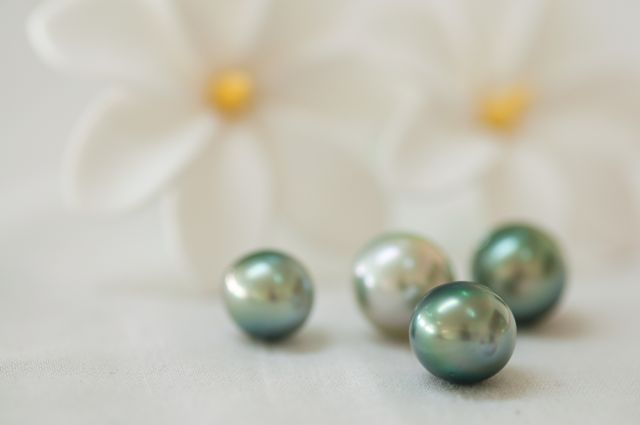




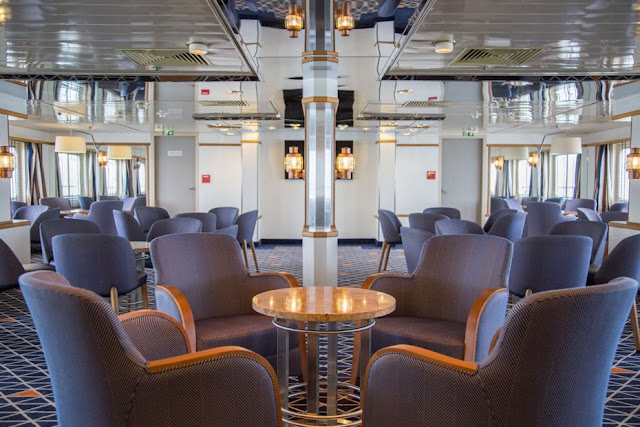


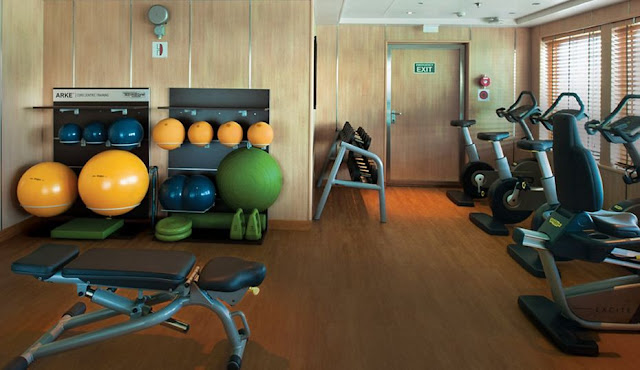

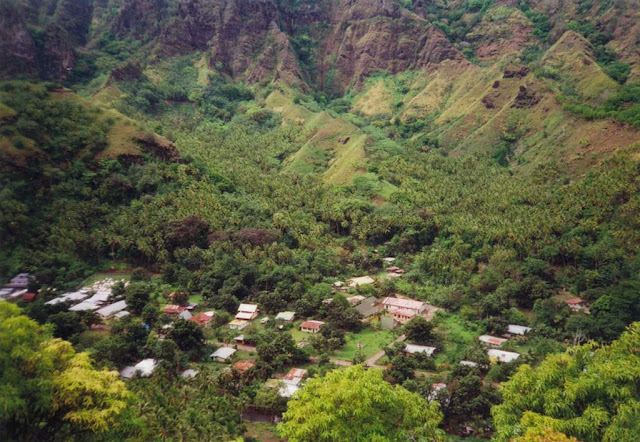
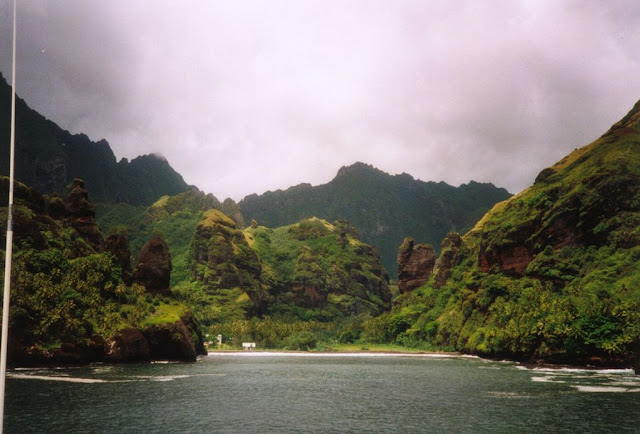



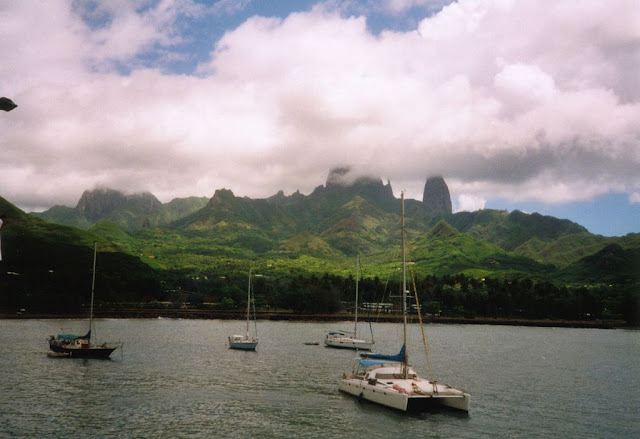

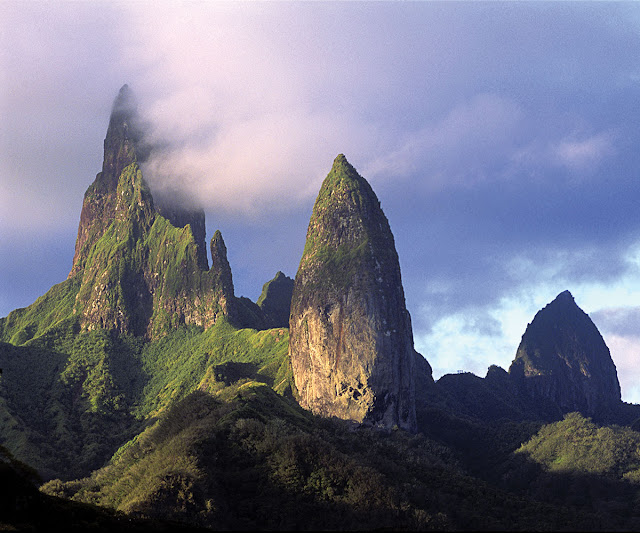







Wealthy Trips provide exclusive offers of full-service luxury travel to help you plan the custom vacation of your dreams as we are one to provide world's best luxury lifestyle services networks.
ReplyDeleteFor more information
Luxury Lifestyle